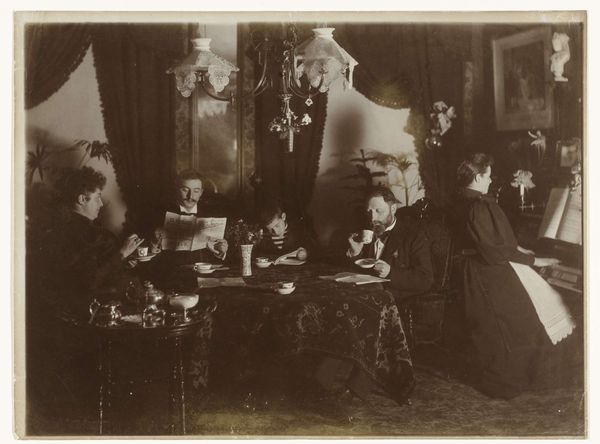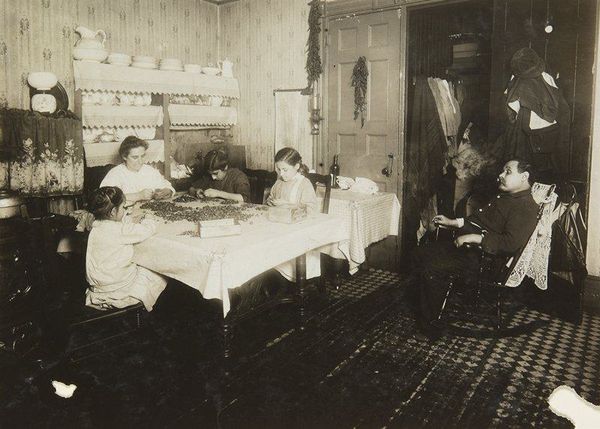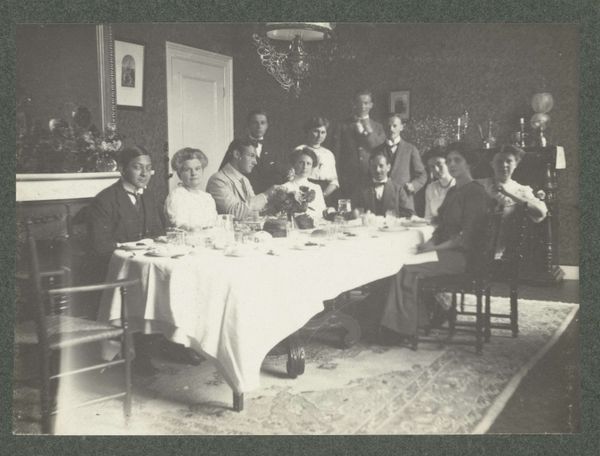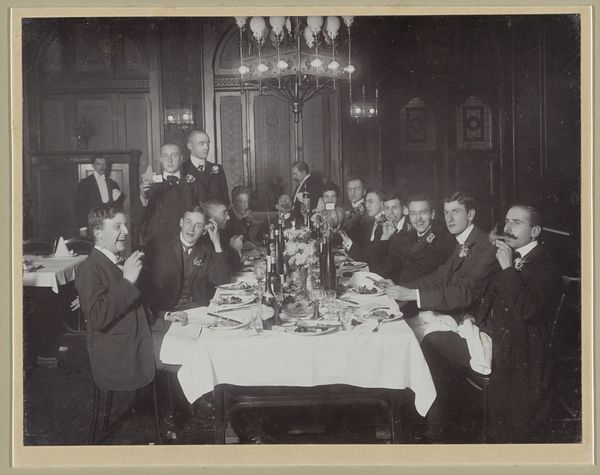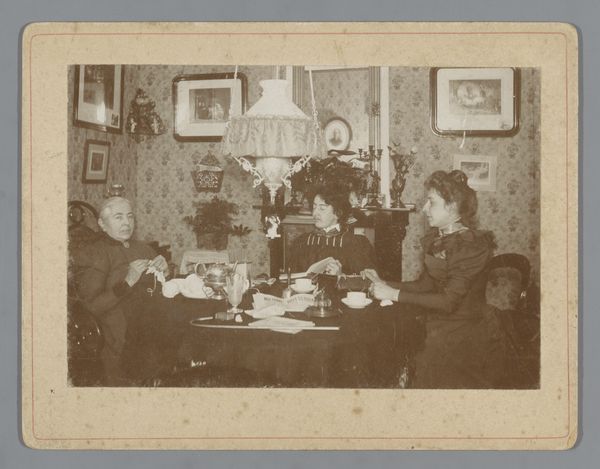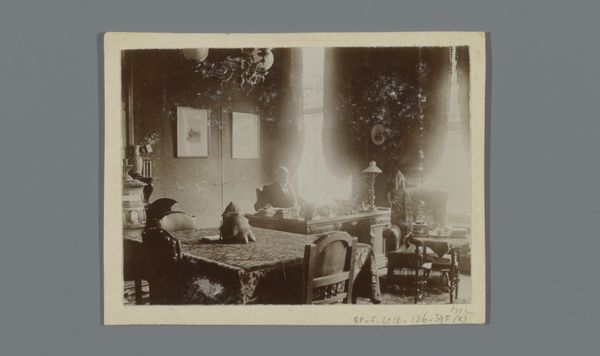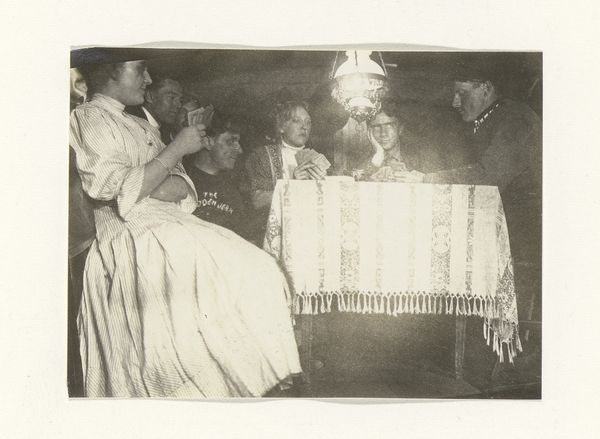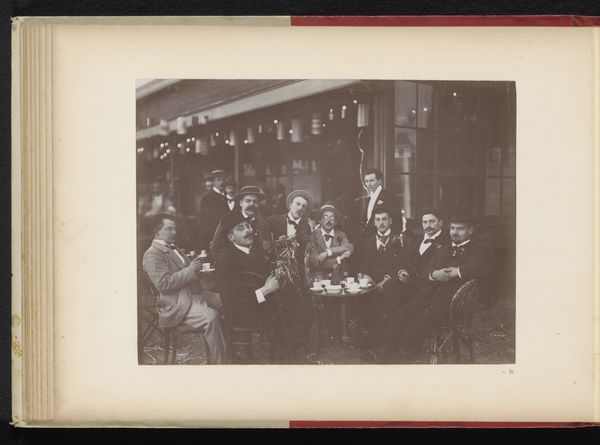
photography, gelatin-silver-print
#
portrait
#
print photography
#
still-life-photography
#
archive photography
#
photography
#
historical photography
#
group-portraits
#
gelatin-silver-print
#
realism
Dimensions: height 237 mm, width 177 mm
Copyright: Rijks Museum: Open Domain
Editor: This gelatin silver print by Henri Osieck, titled "Family at Table," was created in 1897. It has a very formal feel to it. What's striking to me is the framed portrait *on* the table itself. How do you interpret the meaning of a photograph of a family *with* a photograph *of a person* in it? Curator: The presence of that photograph is extremely telling. Family portraits in the late 19th century weren't just about capturing likeness; they were performances of social identity and class aspirations. Placing a portrait on the table like this turns the ritual into a commemoration of identity and a statement of lineage, actively invoking a sense of history and shared values at the dinner table. Editor: So, it’s like including an ancestor *in* the gathering, visually at least? What does that suggest about their cultural understanding of the past? Curator: Precisely! This wasn't merely about remembering someone, but about asserting a continuity. We must consider the rise of photography at the time, too. It offered new avenues for the middle and upper classes to solidify their positions within society through carefully constructed and widely disseminated images of themselves, creating new visual strategies for power. Do you think it succeeds? Editor: That’s fascinating! It certainly feels performative now that you mention it. The stiff poses, the chandelier…all speak to wanting to project a certain image. Looking closer, the room feels almost staged for the camera. Curator: The framing of such historical material as photographic ‘still life’ also provides insights into its commodification and role as historical archive. The image prompts discussions about who is afforded historical presence and memorialisation through material culture and image making practices. Editor: I never would have picked up on those nuances. I guess looking at art with a historical lens is about unpacking what that piece was trying to *do* in its own time. Thank you. Curator: Exactly! And what the work continues to *do*, how it circulates in museum spaces, speaks to different audiences today. It's a perpetual conversation across time.
Comments
No comments
Be the first to comment and join the conversation on the ultimate creative platform.
